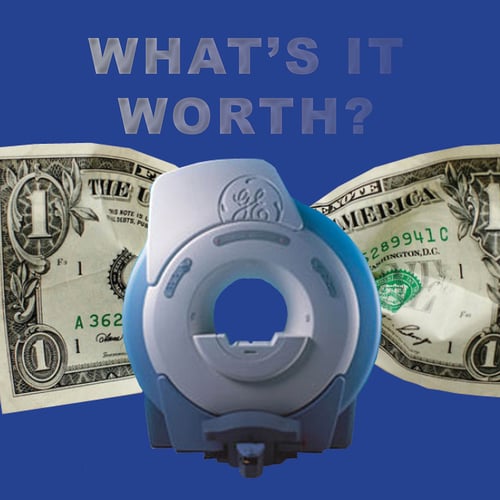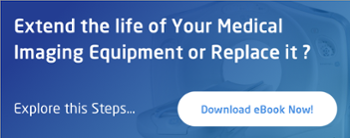Actually, today it’s easier than ever to find out what your current MRI is worth. After all, it can help you decide whether it makes sense to upgrade to a new one, or hang on to the one you’ve got! The value of MRIs can vary. So how do you find out what yours is worth?
to upgrade to a new one, or hang on to the one you’ve got! The value of MRIs can vary. So how do you find out what yours is worth?
- When was it manufactured? Even if your system is older and might not be worth much in the U.S. or Europe, it could be very interesting to buyers in other countries The year your MRI was manufactured can make a difference in pricing. Remember to look for the year it was manufactured, and not the year you bought it or installed it. You can find this information on the back of the gantry. It’s also stamped on the magnet itself.
- What is the gradient strength? When it comes to magnets, 1.5 Tesla is what folks are looking for, with 1.5T scanners constituting the majority of pre-owned MRIs sold worldwide. It’s important to know your gradient amplitude (mT/m) and slew rate (mT/m/ms). Be sure to include gradient package buzzwords from manufacturers like Siemens "Quantum" Philips "Nova" and GE "Echospeed".
- Know your MRI coils. If you have cardiac, neurovascular, breast or angio coils, it can enhance the value of your MRI system. However, don’t depend on your invoice or original quote. Personally take inventory of your coils with an MRI tech to make sure your list of coils is accurate. Make sure all the coils are in great condition and work 100%. Learn more about coils here!
- Operating software makes a difference, too. Make sure you know your current system operating software. This will usually show up on your screen when you’re booting up your system. You can also go to your Settings or Service menu and click on the Option tab to see the list of your current enabled software options. Manufacturer terms like EXCITE, Achieva and TIM can also impact the value of your MRI. If you’re including processing workstations like Leonardo or AWW, list them, as well.
- How to get it from Point A to Point B. Will it be complicated to transport your MRI to your buyer’s site? If so, it will affect what you can charge for your system. For example, it’s much easier to move an MRI scanner out of a first floor suite than having to lower it with a crane. Be sure to photograph the most likely path of exit to share with potential buyers.
- Take photos of your entire system. This kind of documentation can give potential buyers information and peace of mind.
Talk to An Expert
Once you’ve gathered all of this information, be sure to contact an expert like Atlantis Worldwide. We sell, buy, export, transport, deinstall and install refurbished and used medical imaging equipment all over the world. With all gathered information, we can provide you with an accurate equipment market valuation, so you know where you stand!
Some blogs you may have missed:
- The Future of Helium & MRIs
- MRI Cold Head Tips
- Service Contracts for Imaging Systems: Penny Wise and Pound Foolish?
- Radiologists, Healthcare & Social Media
- Should your business lease or buy medical imaging equipment?
- Free MRI Resources
Meet the author: Vikki Harmonay




